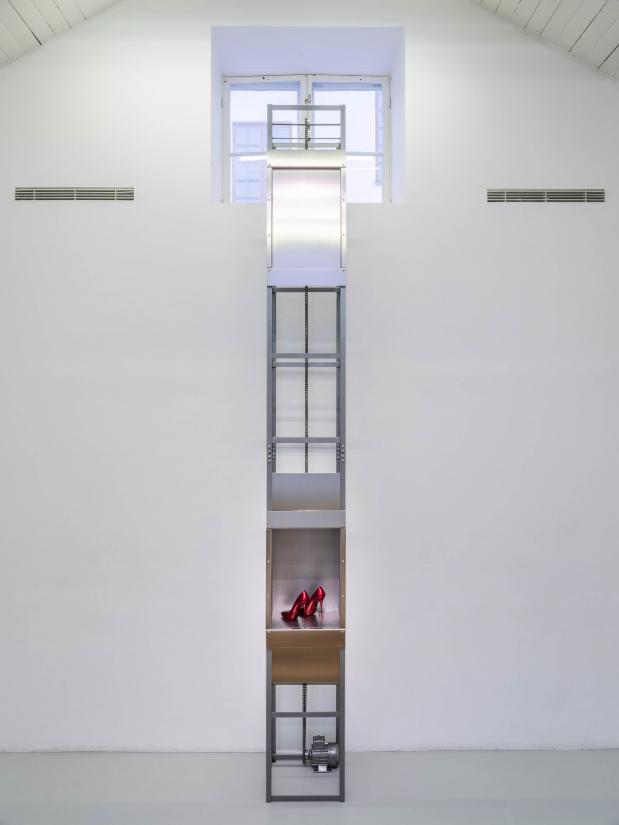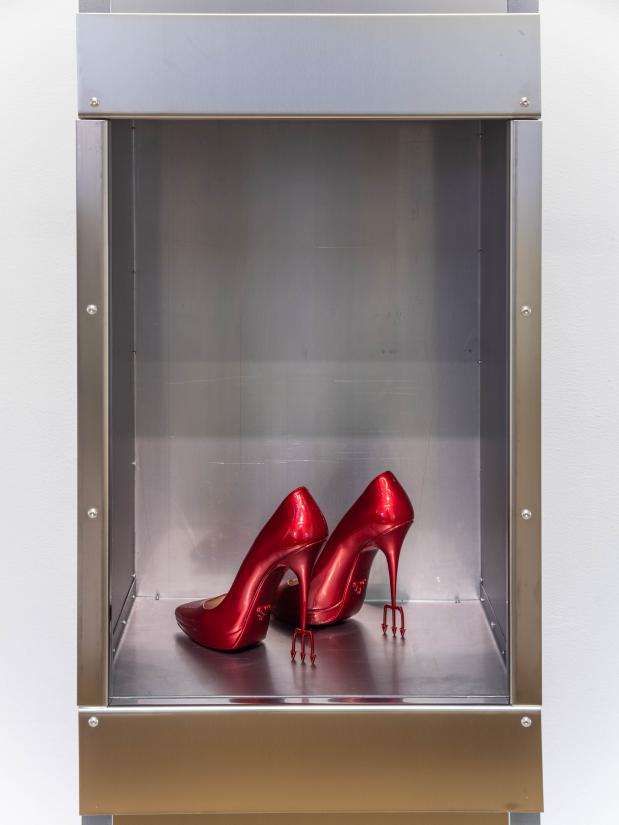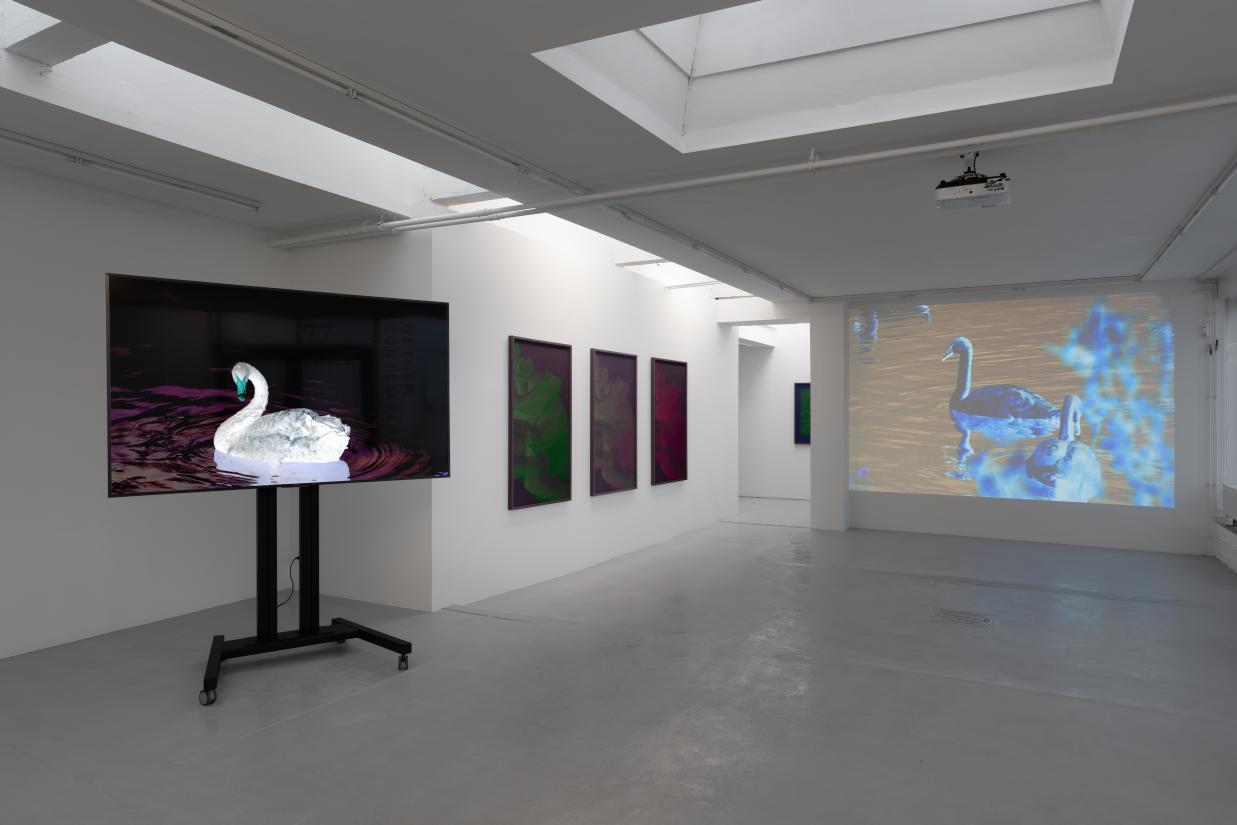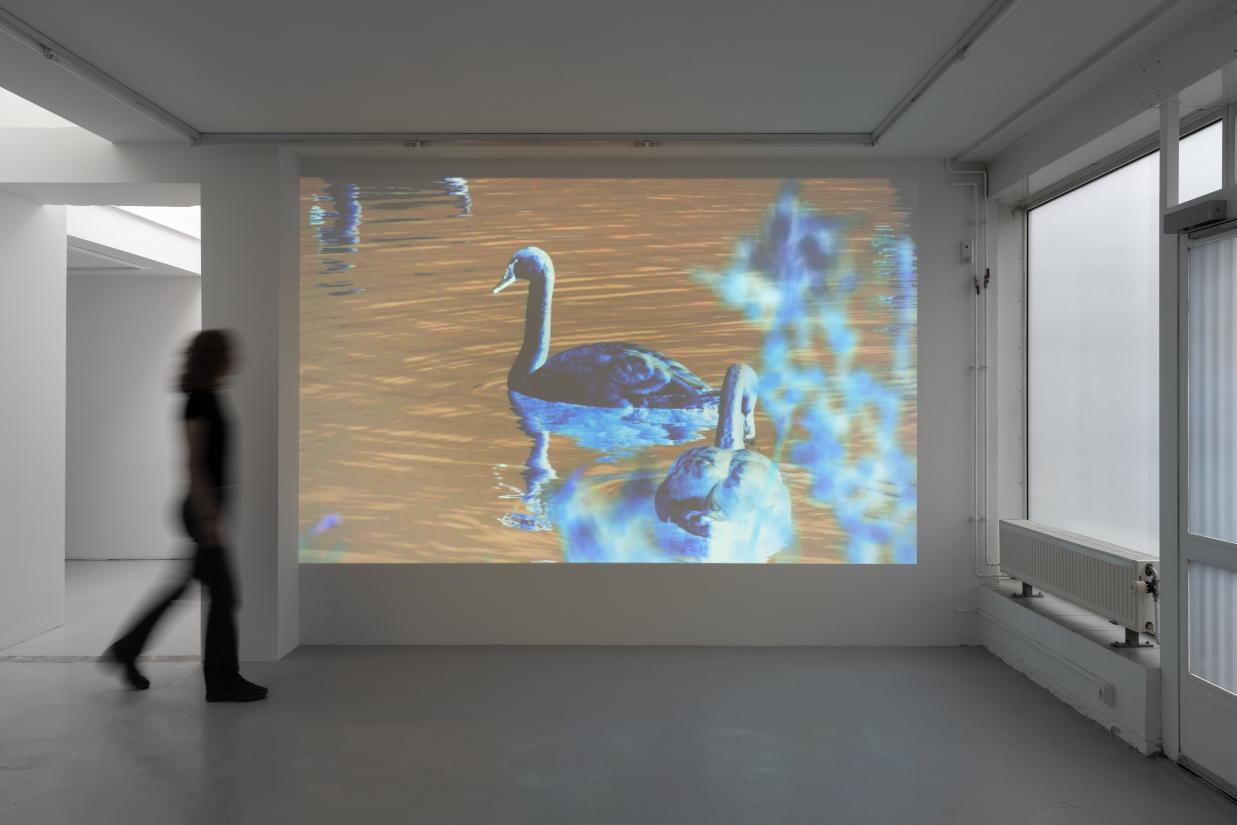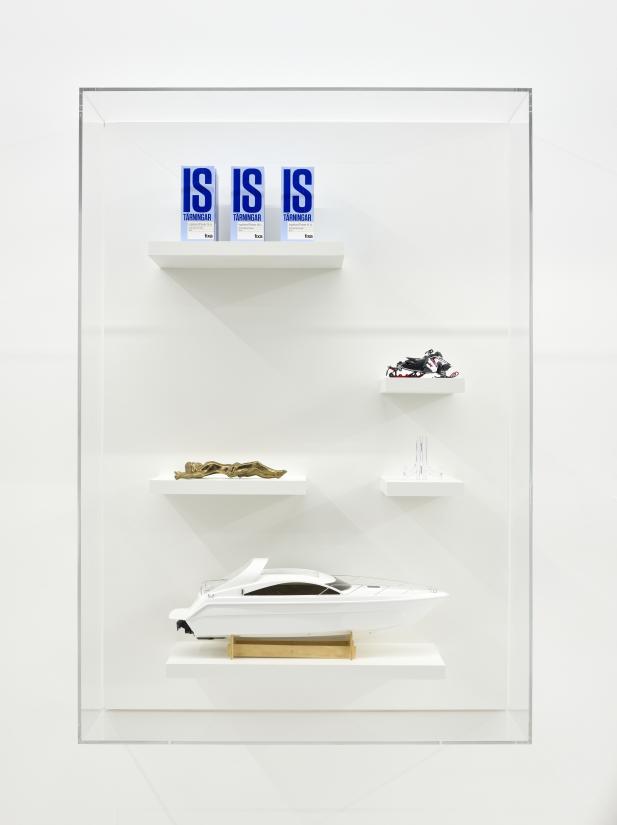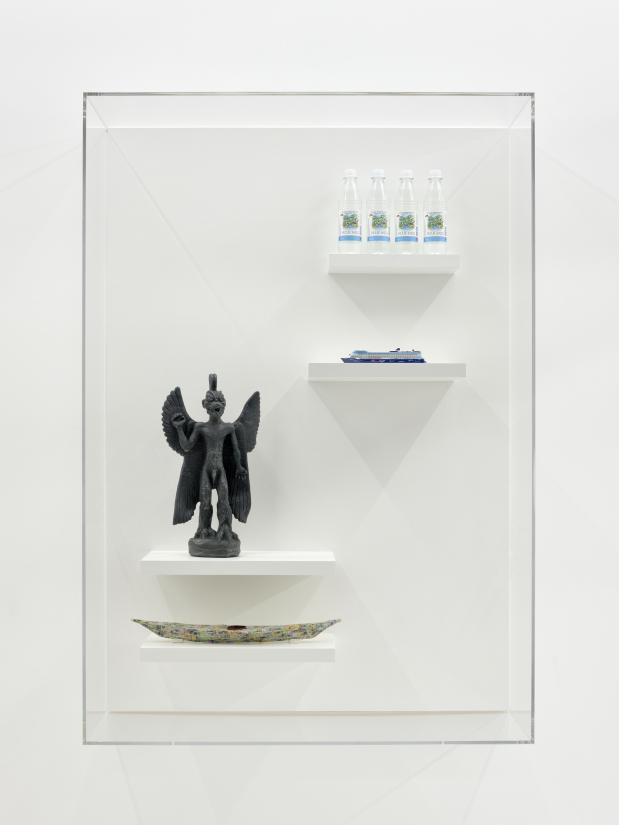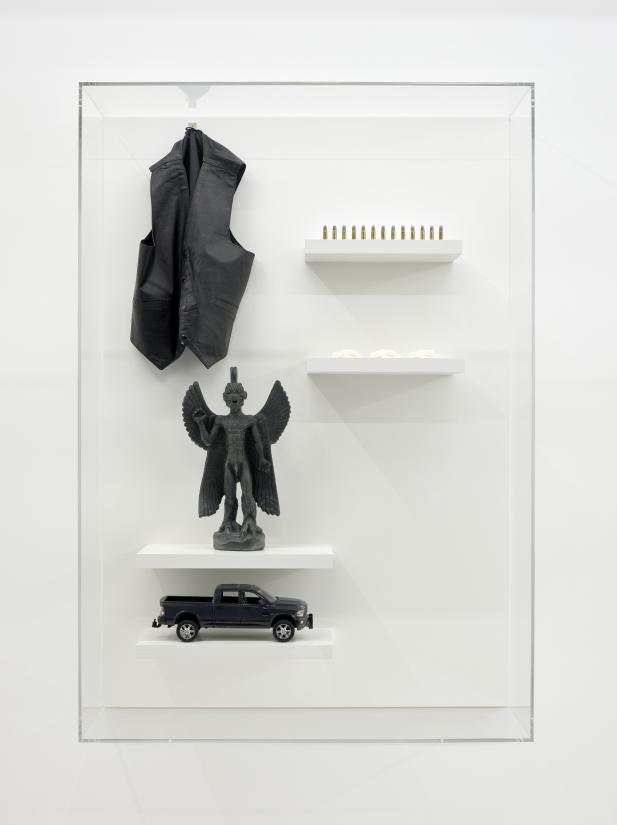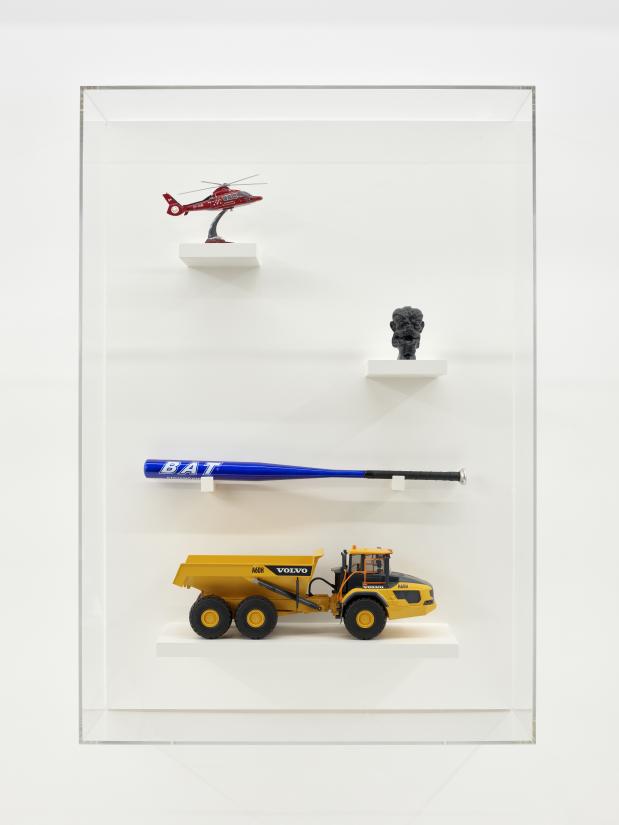In 2023, ARKEN was officially renamed from Museum of Modern Art to Museum of Contemporary Art. The new name is a manifestation of the museum’s new strategy, which puts contemporary art centre stage.
The new strategy aims to shape the museum’s permanent collection to more closely reflect society’s diversity, address the climate crisis and contribute critical perspectives on Western and Danish art history.
The pieces by three young artists that were recently donated to ARKEN by the New Carlsberg Foundation will become key elements in the museum’s permanent collection of Danish and international contemporary art from after 1990 and indicate the direction of future acquisitions.
Martin Brandt Hansen
Martin Brandt Hansen’s (b. 1990) artistic practice challenges and rattles existing prejudice against Greenlandic culture and exposes the processes by which objects are attributed cultural significance and value. No fewer than seven of his works – a readymade Honda outboard motor and six of his cabinet pieces – will now become part of the collection at ARKEN.
Martin Brandt Hansen’s cabinets display masks and sculptures that humorously imitate historical ethnographic objects and Inuit iconography side by side with contemporary mass-produced everyday objects, such as ice cube bags, baseball bats and miniature models. This side-by-side presentation puts stereotypes of Greenlandic culture on a par with Western production aesthetics, everyday objects with works of art, hand-crafting with industrial mass production.
The minimalist displays in the glass cases and the absence of an obvious thematic or formal relationship among the objects has similarities with traditional museum presentations of ethnographic objects. Numerical titles, such as Cabinet 3905.3 / Ultima Thule, underscore the ironic commentary on the notion of rational museum principles, which have historically tended to categorize works by Greenlandic artists as ethnographic objects, rather than art.
Marie Kølbæk Iversen
Marie Kølbæk Iversen (b. 1981) creates haunting installations that relate new research and technology to our common mythologies, presented by simple means but incorporating complex theoretical issues.
Portents (2021) consists of a two-channel video installation with recordings of white swans in Denmark and black Australian swans in a park in São Paulo, Brazil. Marie Kølbæk Iversen shows the swans in a negative format, where the colours are inverted, so that the white swans appear black, while the black swans appear white. The black swans in the piece refer to the so-called black swan theory, which argues that the world develops when events that were once considered inconceivable somehow occur.
The spectre of the end of the world is lurking just under the surface in the video installation, as the swans float in a darkness broken by flickering psychedelic layers of colour. Associations to the looming climate disaster are further supported by the title, Portents: a sign or indication of a miraculous or wonderful occurrence or, more commonly, an omen of calamitous future events. The installation invites us to reflect on the unpredictable and all-pervasive consequences of climate change.
Tora Schultz
Tora Schultz’s (b. 1991) artistic practice involves readymades and simple sculptures and uses humour to expose the gender stereotypes that are built into everyday objects and familiar settings. The Devil’s Contract (2021) is a central work in Schultz’s practice that captures her characteristically poppish and innovative use of symbols and readymade aesthetics.
The piece consists of a pair of dizzyingly tall Prada stiletto shoes in red lacquer with pointy pitch forks for heels. The shoes, showcased inside a stopped dumbwaiter, are a reference to PR material for the 2006 pop cult film The Devil Wears Prada. In a playful tone, the piece thus addresses the fashion industry’s sex symbols and the perpetuation of the perception of powerful women as cold and mean.
The Devil’s Contract constitutes what ARKEN’s new collection strategy characterizes as a ‘signature piece’, a piece that encapsulates the artist’s practice during the period when it was made. The piece will be included in the collection’s post-pop section.
